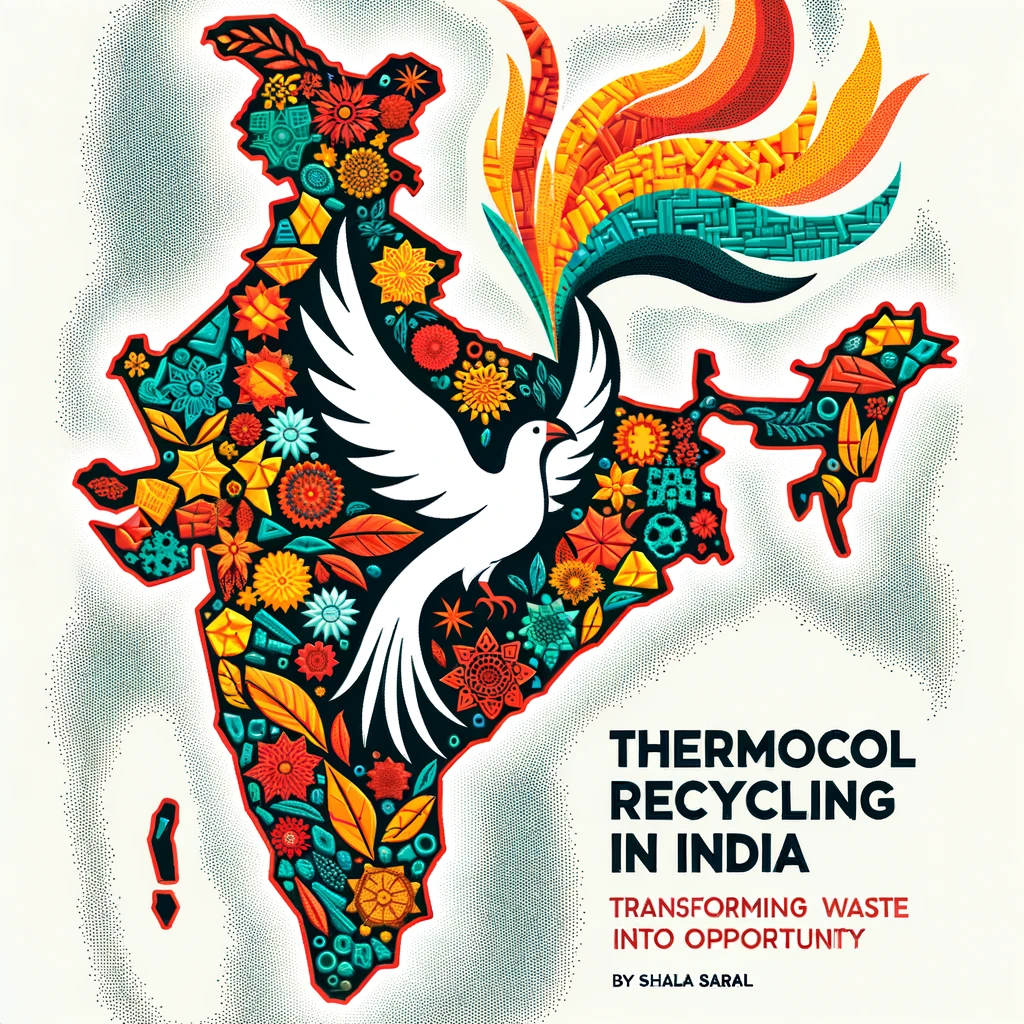
Thermocol Recycling in India: An Eco-Friendly Business Revolution

Thermocol Recycling in India: Transforming Waste into Opportunity
Introduction: Unpacking the Thermocol Conundrum
Thermocol, scientifically termed as polystyrene, stands as a popular choice for insulation and packaging due to its lightweight and durable characteristics. Yet, it poses a formidable environmental challenge. In the vast landscapes of India, an estimated one million tonnes of thermocol waste emerges annually, with a mere two percent undergoing recycling.

Pioneering Change: Sanyam Jain’s Recycling Venture
In a commendable stride towards sustainability, Sanyam Jain, an enterprising individual, embarked on a journey in 2014 to establish a thermocol recycling facility. Located in India, this plant stands as a testament to innovation, providing livelihoods to over fifty individuals. By sourcing thermocol waste from an expanse of twenty to twenty-five kilometers, Jain’s establishment metamorphoses it into reusable polystyrene granules. These granules subsequently find utility in crafting items like photo frames and bangles.
Decoding the Thermocol Recycling Process
The transformation of thermocol waste to a valuable resource is intricate yet fascinating:
- Grinding: The initial stage involves pulverizing thermocol into a dense, adhesive pulp.
- Separation: Concurrently, extraneous plastic shavings are meticulously sieved out.
- Melting & Extrusion: The resultant pulp undergoes melting, subsequently being extruded into a viscous wire-like structure.
- Pellet Formation: The final step involves segmenting this wire into tiny pellets, or the coveted polystyrene granules, ready for reuse.
The Twin Benefits: Environmental and Economic
Recycling thermocol proffers a dual advantage. Environmentally, it curtails the voluminous thermocol waste directed towards landfills. Economically, it generates employment, fostering a sustainable revenue model.
Advocating for Thermocol Recycling: A Collaborative Endeavor
Promoting this recycling initiative demands a synergized effort:
- Production & Packaging Entities: Such firms, utilizing thermocol, should be mandated to ensure its responsible disposal. This can be via in-house recycling or by remunerating a certified recycling agency.
- Government Intervention: Governments can amplify recycling rates through financial incentives for recyclers and by orchestrating public awareness campaigns.
- Consumer Participation: An informed consumer base, diligently recycling thermocol, can significantly augment recycling rates.
Conclusion: Envisioning a Sustainable Future
With collective action, the detrimental environmental footprint of thermocol can be curtailed. Through initiatives like thermocol recycling, we can transition towards a more sustainable and eco-friendly future, benefiting both our planet and its inhabitants.